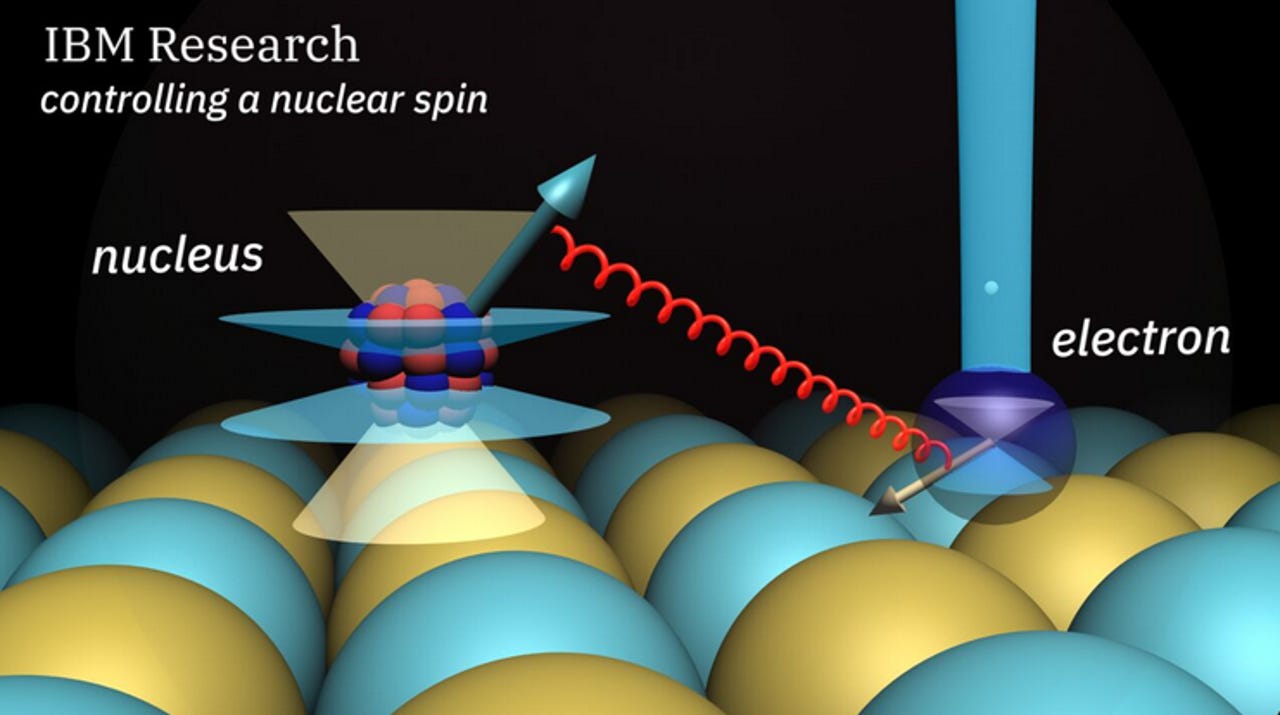IBM Research creates technique to control magnetism of single copper atom


Inside the atom is the nucleus, a tiny magnetic core. This image highlights the connection of IBM's Scanning Tunneling Microscope and an atom to manipulate positioning. Source: IBM
Featured
IBM Research has developed a new technique to control the magnetism of a single copper atom's nucleus via Nuclear Magnetic Resonance, or NMR.
CNET: Best Black Friday deals 2018 | Best Holiday gifts 2018 | Best TVs to give for the holidays
NMR is the process behind the more familiar magnetic resonance imaging, or MRI. NMR is also a tool to see the structures of molecules.
IBM Research used its Scanning Tunneling Microscope, its invention to view atoms and move them individually. The idea is that the microscope can study how NMR changes and shape them accordingly.
The company noted that it used copper because it is widely used and hooks up microcircuits. Meanwhile, the magnetic properties of copper aren't well known. By manipulating copper atoms, IBM Research is hoping to create new applications for small magnetic memory devices.
According to IBM Research, its breakthrough could have implications for quantum information processing and future storage technologies.
TechRepublic: A guide to tech and non-tech holiday gifts to buy online | Photos: Cool gifts for bosses to buy for employees | The do's and don'ts of giving holiday gifts to your coworkers
IBM Research researchers Dr. Kai Yang and Dr. Christopher Lutz along with co-authors published the research in Nature Nanotechnology.
Best gifts for co-workers under $50 on Amazon
Black Friday 2018 deals:
- Black Friday 2018 and Cyber Monday 2018: When and where to get the best deals
- Walmart Black Friday ad features $99 Chromebook, $89 Windows 2-in-1 laptop
- BJs Wholesale Black Friday ad leaks with laptop, desktop, tablet deals
- Target Black Friday ad includes $250 iPad mini 4, $120 Chromebook deals
- Costco kicks off Black Friday ad leaks season with $250 iPad, pair of $200 laptops
- Amazon Black Friday 2018: See early deals on Echo, Fire HD, and more
- Dell Black Friday ad features $120 Inspiron laptop, $500 gaming desktop